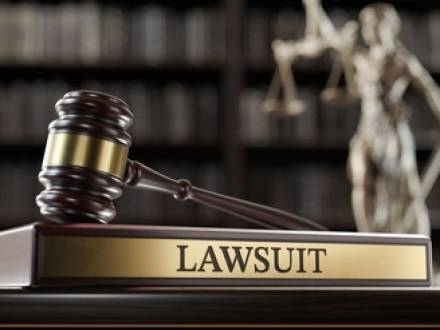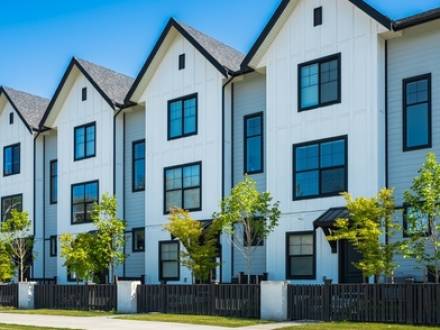 Polish,
Polish,  Ukrainian,
Ukrainian,  Russian,
Russian,  Hindi,
Hindi,  Spanish,
Spanish,  French and
French and  Greek.
Greek.
Recent Blog Posts
Illinois Medical Malpractice: The Most Common Causes
 When you walk into a doctor’s office or a hospital, you expect professional, skilled care. Unfortunately, across the state of Illinois, thousands of patients experience preventable medical errors that can leave them with worsening symptoms, new injuries, permanent disabilities, or worse.
When you walk into a doctor’s office or a hospital, you expect professional, skilled care. Unfortunately, across the state of Illinois, thousands of patients experience preventable medical errors that can leave them with worsening symptoms, new injuries, permanent disabilities, or worse.
Medical malpractice remains one of the most complex and emotionally charged areas of Illinois injury law. While each case is unique, certain types of mistakes occur far more often than others, from misdiagnoses to surgical errors. When these errors rise to the level of negligence, victims face long-term complications, financial losses, and life-altering injuries.
Understanding the top causes of medical malpractice claims in Illinois can help you recognize whether negligence played a role and whether you have a legal claim to recover damages. If you believe you are the victim of medical negligence, it could be time to speak to an experienced Arlington Heights, IL medical malpractice attorney.
Can Illinois Condo Boards Be Sued for Underfunded Reserves?
 Illinois condominium associations must maintain financially healthy reserves, both for future repairs and for the legal protection of the board itself. When condo owners are told they must pay for a repair because there are insufficient reserves, the board should expect pushback. When reserve funds are underfunded, owners may begin pointing fingers at board members for mismanagement or breach of fiduciary duty. The question then arises regarding whether an underfunded reserve account is sufficient to trigger legal exposure for the board.
Illinois condominium associations must maintain financially healthy reserves, both for future repairs and for the legal protection of the board itself. When condo owners are told they must pay for a repair because there are insufficient reserves, the board should expect pushback. When reserve funds are underfunded, owners may begin pointing fingers at board members for mismanagement or breach of fiduciary duty. The question then arises regarding whether an underfunded reserve account is sufficient to trigger legal exposure for the board.
The answer to that question likely depends on how and why the shortfall occurred. Condominium and HOA boards have rules and laws they must abide by, but even when everything is done correctly, a lawsuit can still occur. If your board is being sued or has questions regarding reserves, speaking to an experienced Cook County, IL condominium law attorney can help you understand your obligations.
Elder Abuse Online: Nursing Home Staff and Privacy Breaches
 The rise of social media has resulted in a troubling new "trend" regarding Illinois nursing home abuse. Staff in nursing homes are posting "elder shaming" videos on TikTok, sharing unauthorized photos of elderly patients in group chats, and misusing smartphones to deliberately humiliate elderly residents.
The rise of social media has resulted in a troubling new "trend" regarding Illinois nursing home abuse. Staff in nursing homes are posting "elder shaming" videos on TikTok, sharing unauthorized photos of elderly patients in group chats, and misusing smartphones to deliberately humiliate elderly residents.
While these acts are certainly unethical, they also violate Illinois privacy laws, criminal statutes, and the Nursing Home Care Act (210 ILCS 45/). When loved ones are filmed, exposed, or mocked online by those who are supposed to be caring for them, personal injury lawsuits may be filed.
Although digital abuse differs from physical or emotional abuse and neglect, it can be just as harmful. If your loved one has been shamed or humiliated through digital avenues, speaking to an experienced Arlington Heights, IL nursing home abuse attorney can help you seek justice on his or her behalf.
Can Condo Associations Regulate Cooking Odors, Cannabis, and Vaping?
 Condominium boards are usually well-versed in handling noise complaints from parties or excessively loud neighbors, but now associations are facing a new kind of nuisance dispute – smells. From cannabis smoke drifting through the vents, vaping in common areas, and strong cooking odors, issues of odors can raise awkward questions regarding how far an association can go in regulating private behavior inside a unit. Does the condominium board face liability if repeated complaints about smells are ignored?
Condominium boards are usually well-versed in handling noise complaints from parties or excessively loud neighbors, but now associations are facing a new kind of nuisance dispute – smells. From cannabis smoke drifting through the vents, vaping in common areas, and strong cooking odors, issues of odors can raise awkward questions regarding how far an association can go in regulating private behavior inside a unit. Does the condominium board face liability if repeated complaints about smells are ignored?
How can a condominium association balance residents’ individual owner rights and the right to privacy with the comfort of other owners? It is important to understand the condominium board’s authority under the Illinois Condominium Property Act (Ch. 765, Act 605, Sections 1 through 35) and how related case law can help navigate these challenges. An Arlington Heights, IL condominium association law attorney can help guide you through this tricky situation to ensure you follow the law and avoid claims of overreach or bias.
Smart Tech Guidelines That Illinois HOAs Can Enforce
 While smart technology was once limited to high-end or luxury homes, this is no longer the case. Across the United States, and in Illinois neighborhoods, smart technology is becoming standard. With the wide range of smart technologies (Ring doorbells, Nest thermostats, and even community-wide security cameras and property inspection drones), HOAs face the challenge of determining how much smart tech is too much - and who sets the limits?
While smart technology was once limited to high-end or luxury homes, this is no longer the case. Across the United States, and in Illinois neighborhoods, smart technology is becoming standard. With the wide range of smart technologies (Ring doorbells, Nest thermostats, and even community-wide security cameras and property inspection drones), HOAs face the challenge of determining how much smart tech is too much - and who sets the limits?
Illinois HOA boards must strike a balance between legitimate concerns regarding privacy and residents’ enthusiasm for security and convenience. Unfortunately, Illinois law has not quite caught up with the latest forms of technology, leaving HOA boards responsible for developing enforceable policies. If your HOA board is struggling with these policies, an experienced Arlington Heights, IL HOA attorney can help.
When Illinois Cosmetic Surgery Leads to Wrongful Death
 In the fall of 2024, a Cook County jury awarded $66 million to the family of a woman who died following two cosmetic surgery procedures (a tummy tuck and liposuction). This amount included $32 million for grief and suffering, $15 million for loss of consortium or companionship, and $19 million for the decedent’s pain and emotional distress before her death. The attorney for the family called it a record medical malpractice verdict for wrongful death in the state.
In the fall of 2024, a Cook County jury awarded $66 million to the family of a woman who died following two cosmetic surgery procedures (a tummy tuck and liposuction). This amount included $32 million for grief and suffering, $15 million for loss of consortium or companionship, and $19 million for the decedent’s pain and emotional distress before her death. The attorney for the family called it a record medical malpractice verdict for wrongful death in the state.
Generally speaking, it can be more difficult to win a personal injury or wrongful death lawsuit following a cosmetic procedure because these procedures are elective. This means that the patient is often assumed to have accepted any inherent risks from the procedure. The success of such a claim lies in proving that the surgeon’s negligence caused an injury or death that goes far beyond mere dissatisfaction with the cosmetic result – or even a complication from a failed cosmetic surgery.
Community Gardens, Chickens, and Bees in HOA Communities
 Across the United States, including Illinois, neighborhoods are changing, with more residents interested in sustainable living. This could translate into keeping a few backyard chickens, a beehive, or planting a community garden. But what happens when trends like this come face-to-face with Homeowner Association (HOA) rules?
Across the United States, including Illinois, neighborhoods are changing, with more residents interested in sustainable living. This could translate into keeping a few backyard chickens, a beehive, or planting a community garden. But what happens when trends like this come face-to-face with Homeowner Association (HOA) rules?
Conflict can result when HOA residents want to push the boundaries of the rules, yet there should always be a balance between legal obligations, community standards, and individual freedoms. Should HOAs work to accommodate these sustainable living trends, or is this a slippery slope that could result in residents taking even more liberties? Homeowner Associations can benefit significantly from discussing issues like this with an Arlington Heights, IL HOA attorney.
What Is Pushing the Rise in Sustainable Living in Illinois?
Major state investments in green technology and infrastructure, along with evolving consumer practices, are driving the push for sustainable living across the state. These factors create an environment where eco-friendly choices are not only encouraged but they are also affordable and accessible.
Who Is Responsible for Repairs in an Illinois Condominium?
 When something breaks in a condominium, the first question usually asked is "Who will pay for the repairs?" Whether a leaky pipe, a broken window, or a damaged roof, responsibility for repairs in a condo community depends on whether the damage occurs in a common element or a unit, as well as what the condo’s governing documents state.
When something breaks in a condominium, the first question usually asked is "Who will pay for the repairs?" Whether a leaky pipe, a broken window, or a damaged roof, responsibility for repairs in a condo community depends on whether the damage occurs in a common element or a unit, as well as what the condo’s governing documents state.
Condominium laws can be complex. Boards and property managers must understand the applicable laws to avoid disputes, delays, or legal liability while protecting the association. If you are uncertain whether your association is liable for repairs, it can be helpful to speak to a knowledgeable Arlington Heights, IL condominium law attorney.
What Are the Differences Between Common Elements and Units?
Common elements in a condominium association include shared areas such as:
- Roofs
- Hallways
Can a Law Enforcement Chase Lead to a Wrongful Death Claim?
 A day before the Fourth of July holiday, a police pursuit of another vehicle in Wood River resulted in that vehicle slamming into a couple who were simply in the wrong place at the wrong time (the intersection of Illinois 143 and 3). The husband and wife from Alton were killed, prompting the family to file a wrongful death claim against the city of Wood River.
A day before the Fourth of July holiday, a police pursuit of another vehicle in Wood River resulted in that vehicle slamming into a couple who were simply in the wrong place at the wrong time (the intersection of Illinois 143 and 3). The husband and wife from Alton were killed, prompting the family to file a wrongful death claim against the city of Wood River.
The lawsuit claims that the police officers "flagrantly" disregarded the risks of a high-speed pursuit over minor violations - equipment and registration issues. As a result of the involvement of the Wood River police officers, the investigation was turned over to the Illinois State Police. The person being chased has been charged with murder. Before the crash, the suspect reached speeds of 70 mph in a 35-mph zone.
While high-speed police pursuits are intended to protect the public, this goal should always be balanced with the safety of the public and the risks of a high-speed chase. If your loved one was killed because of a fleeing suspect and pursuing officers, and you believe negligence or recklessness on the part of the police occurred, it is important to speak to an experienced Arlington Heights, IL wrongful death lawyer.
How Are Condominium Delinquencies Handled After 90 Days?
 When a unit owner in an Illinois condominium association falls behind on assessments, it can place a burden on the entire community. Illinois law allows associations to take specific legal steps to recover the amounts owed after 90 days of nonpayment. The process can escalate quickly from late fees and demand notices to eviction proceedings.
When a unit owner in an Illinois condominium association falls behind on assessments, it can place a burden on the entire community. Illinois law allows associations to take specific legal steps to recover the amounts owed after 90 days of nonpayment. The process can escalate quickly from late fees and demand notices to eviction proceedings.
It is important that condominium associations are clear about their rights and responsibilities. The board has a fiduciary duty to manage the association, including taking appropriate steps to collect delinquent assessments and ensure the association's financial stability. When questions arise, having a strong legal advocate is extremely important. An Arlington Heights, IL condominium law attorney can ensure that all steps taken comply with Illinois laws.















